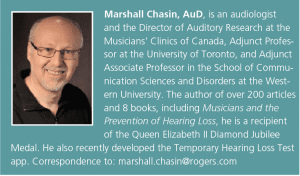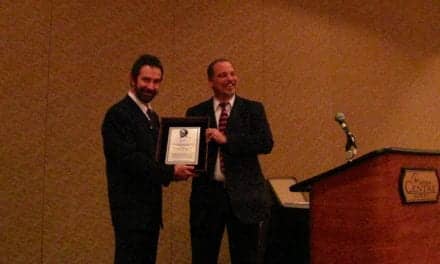Back to Basics | March 2019 Hearing Review
This may sound like a cheap romantic novel or a new soap opera but “area over love” is an important acoustic principle that rears its romantic head in a number of clinical scenarios that are encountered, almost every day.
Also slightly less romantic, the following equation can be helpful:
F ? Area/LoVe
…where the frequency of interest is proportional to the cross sectional area divided by the Length (Lo), as well as the remaining equivalent Volume (Ve).
In the case of vents, there is an inherent resonance of the vent that is created by the air oscillating as a single mass. In acoustics, this is called an “inertance.” Vents in hearing aid fittings are incorporated to acoustically reduce the low-frequency sound energy. This may assist in reducing the occlusion effect or as a supplement to control low-frequency gain in a hearing aid fitting. But the air in the vent itself can act in the opposite direction by amplifying this same low-frequency region with a small resonance.
This vent-associated resonance is typically only seen when the earmold is well sealed in the ear canal, and is not usually seen with standard RIC hearing aid fittings with a non-custom mold. It is, however, observed when a vented custom earmold is used, such as that utilized for more significant hearing losses.
The resonant frequency of the vent-associated resonance is given by its cross sectional area/Length x Ve where Ve is the volume of the unoccupied ear canal + equivalent volume of the tympanic membrane and middle-ear structures. Of course the Ve is a relatively small contributor for higher frequencies and, in most clinical cases, a constant (that we can just ignore) for the low-frequency region.
A long and narrow vent will have a low-frequency vent-associated resonance, and a short and wide vent will have a higher frequency vent-associated resonance.
I prefer memorizing this acoustic fact as simply “area over love.”
Another clinical example where this can rear its romantic head is with the tuning of musicians’ earplugs. These earplugs use a Helmholtz resonator, where a compliance (typically a small circular button element) interacts with a volume of air in the custom earmold to create a 2700 Hz resonance that offsets any insertion loss caused by the earplug being in the ear. The net result is a flat or uniform attenuation earplug which can be quite useful for musicians, music listeners, and industrial workers where the environmental sound level is less than 100 dBA.
From time to time we get clients with an abnormally high-frequency or abnormally low-frequency ear canal resonance that is not 2700 Hz. Some large people have long ear canals with ear canal resonances in the 2400-2500 Hz region, and some younger children and other “short-eared” individuals may have resonances nearer 3000 Hz. How do we modify musicians’ earplugs to ensure a flat attenuation pattern?
Using the “area over love” formula, we can establish a lower frequency resonance by making an earmold with a narrow, but long, acoustic pathway in the earmold, and, conversely, for those short-eared people, the acoustic pathway can be wider and shorter—easy instructions for any earmold laboratory to follow.
Too often, our acoustic training can be … boring, but adding some romance to acoustic formulae may be a great benefit!
Citation for this article: Chasin M. Custom earmolds and plugs: A formula of area over love. Hearing Review. 2019;26(3):16.
Image: © Chinahbzyx | Dreamstime.com






